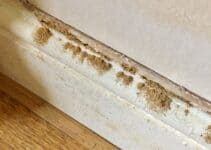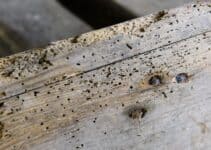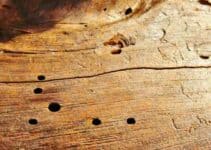For property owners looking to protect their precious timber, woodworm isn’t always an easy household pest to spot. That being said, it’s fortunate that these hungry bugs do leave a few tell-tale signs.
Is Woodworm Dust The Same as Frass?
Yes, Woodworm dust is also known as ‘frass’ or ‘bore dust’, is one such signal that you may have woodworm larvae burrowing around in your home.
The appearance of this wood shaving-like deposit could indicate an active woodworm infestation, or a historic one. But what is it made from? Is it harmful? And what can we tell from its appearance? Here we’ll be answering everything you need to know about this strange, powdery residue.
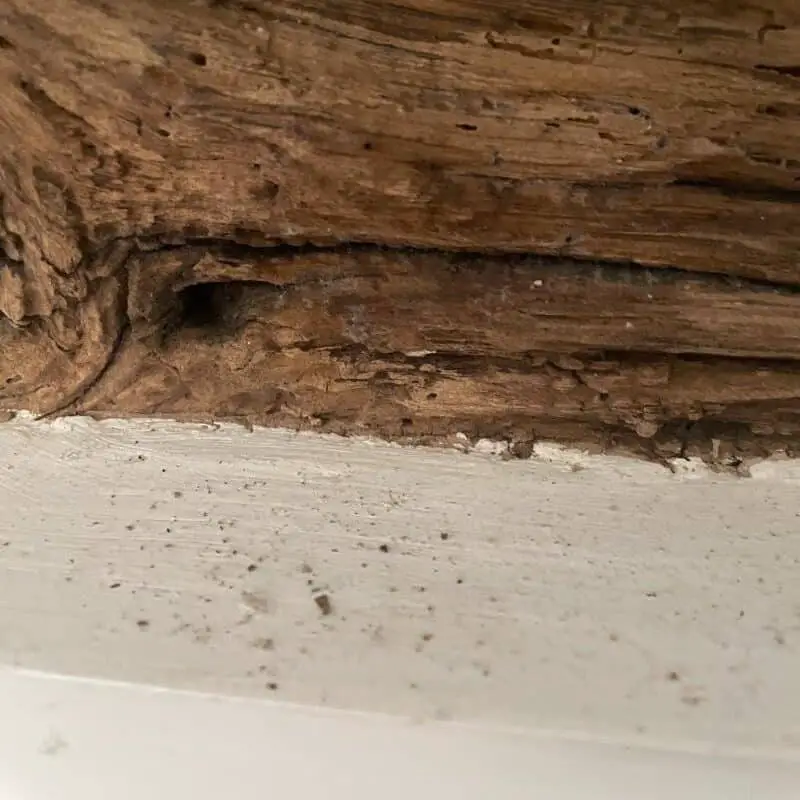
Does Woodworm Leave Dust?
Woodworm deposits, or frass as its often referred to, may look like small piles of household dust, but they’re in fact mostly made up of excrement from woodworm beetle larvae.
These tiny, wood shaving-like fragments are usually a mixture of discarded wood pieces and timber that has been ingested and then passed through the burrowing woodworm.
The term frass is actually a more general term used to describe the faeces or deposits left by various types of insect. It can also include dead skin and egg casings, depending on the species.
Pest-controllers can even tell which insect pests may be present based on the appearance of woodworm frass. So what can we tell from woodworm dust?
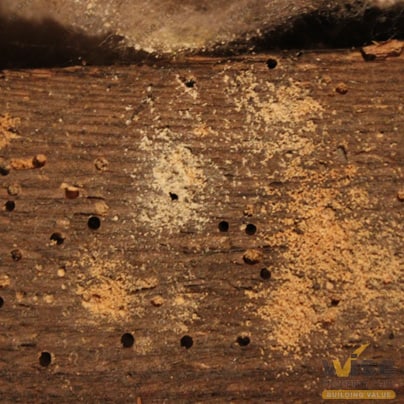
What Does Woodworm Dust Look Like?
Woodworm dust is usually a light, sandy colour. It can look like small piles of tiny woodshavings, as if someone has recently drilled through a piece of timber and failed to clean up afterwards.
Under a magnifying lens you might notice that the miniscule pellets that make up much of this woodworm frass are cream in colour and slightly oval in shape.
These are the faecal pellets from digested wood that has passed through the larvae. If you rub the dust between your fingers it can feel a bit gritty, but best to wash your hands afterwards!
Woodworm dust appears after it falls out of exit holes, or bore holes, left by the burrowing woodworm larvae or newly developed beetle.
As the larvae tunnels through the wood, it eats, digests, or tears off and discards tiny fragments of the material. If holes are made in the exterior of the wood, some of this powdery trail of destruction can fall out.
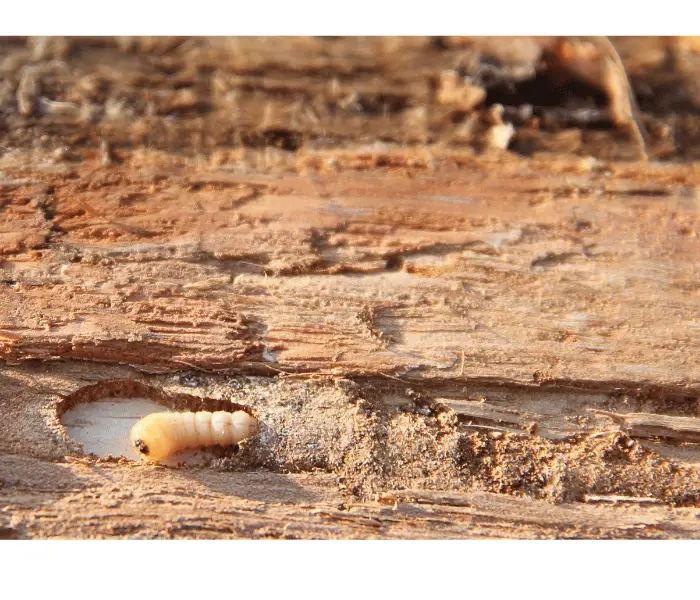
For this reason, woodworm frass will often appear below the area of infected wood or near to exterior holes that have been left by the bug.
Woodworm dust can fall out of these holes either when a beetle creates a new exit hole or when woodworm larvae are burrowing across existing networks of woodworm tunnels and old exit holes.
Brighter, lighter woodworm dust can indicate that it has been produced more recently. This in turn makes it more likely that you have a live infestation on your hands and that you may need to take steps to remove it.
Older, greyer, or ‘dirtier’ looking frass could potentially be residue left over from a now extinct infestation. Depending on whether fresh frass is appearing, you may or may not have a current woodworm issue.
Is Woodworm Dust Dangerous?
The fact that woodworm dust is predominantly faecal matter from larvae may not be pleasant, but there are no strong indications that it’s harmful or toxic to humans. Similarly, household pets are unlikely to be at risk from it.
Nevertheless, curious dogs, cats, or children may be drawn to this substance’s strange appearance, and it’s always better to be safe than sorry! For that reason, it’s a good idea to clean up any woodworm dust that appears.
Besides, it can make otherwise tidy, clean surfaces or floors look messy and unkempt if allowed to build up. A damp cloth and a quick wipe are usually sufficient to clear it away.
Another reason to clear up any woodworm dust that you see is to give yourself a better idea of whether new dust is appearing. If you clean up old piles of frass, only to find new, pale, bright piles of frass appearing, this is a strong indication that woodworm are active in the nearby timber.
You can also use the location of these newly appearing piles to hone in on which areas of timber are likely to be infected, simply by working out which holes the dust is likely to be falling from based on the position of frass piles.
Woodworm Frass
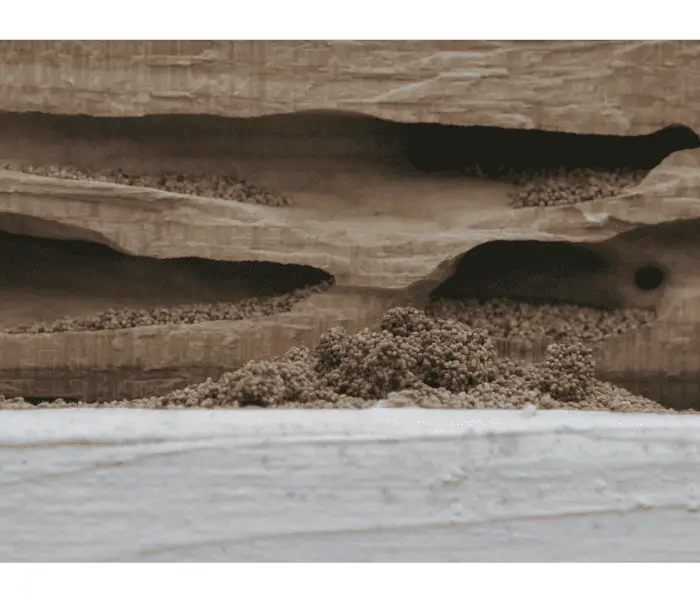
Woodworm dust (frass) can be a useful indicator as to whether or not woodworm are present in your home, as well as to where they might be active.
Although the dust itself is unlikely to cause any issues, the underlying cause could be an infestation that requires dealing with.
Check the colour of the frass and try to establish when and where it’s coming from. Freshly appearing, light coloured piles are likely to mean active larvae and woodworm beetles.
